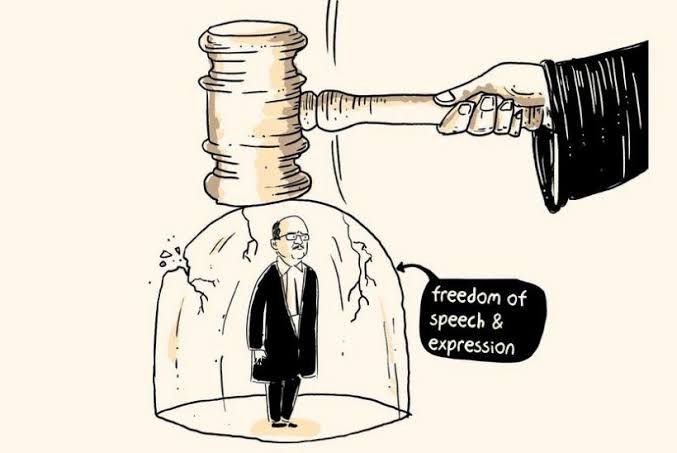Author: Chetansi Dubey, University of Lucknow
Linkedin Profile: https://www.linkedin.com/in/chetansi-dubey-126747295?utm_source=share&utm_campaign=share_via&utm_content=profile&utm_medium=android_app
Abstract
this text explores the sudden frontiers of personal damage regulation, shifting beyond common claims to take a look at situations in which the distinction between the improbable and the actionable becomes blurred. through hypothetical, case studies – a slip and fall on a banana peel necessitating a detailed forensic evaluation of fruit debris, and a declare for emotional misery attributable to a specially egregious pun that mandates professional testimony on comedic requirements – this discussion highlights the power of tort law in accommodating novel accidents and unconventional causative factors. It dissects the fundamental principles of negligence, causation, and damages as implemented to those unique instances, identifying both the complexities and opportunities for prison experts in prosecuting and protecting such movements. the article posits that even in seemingly outlandish situations, the foundational tenets of private damage regulation can supply a sturdy framework for securing redress, underscoring the imperative of progressive prison argumentation, comprehensive evidentiary aid, and a profound comprehension of human experience.
Introduction :
At its center, personal harm law is designed to offer recompense to individuals who’ve sustained damage as an immediate outcome of another birthday celebration’s wrongful conduct or negligence.1 while felony practitioners are automatically engaged with cases involving vehicular injuries, clinical malpractice, and premises legal responsibility stemming from traditional dangers, the scope of potential claims extends far past those familiar categories. certainly, the unpredictable nature of human interplay on occasion engenders situations so atypical they appear to be drawn from satirical literature or traditional animated works. this text ventures into those much less traditional domain names, analyzing how installed criminal doctrines may be carried out to injuries arising from occasions that, to say the least, deviate notably from the regular. we can discover two hypothetical cases that mission the traditional knowledge of actionable harm, thereby showcasing the inherent flexibility and unexpected breadth of private harm jurisprudence.
Case take a look at 1: The Literal Banana Peel Incident – A Forensic exam of Fructal debris :
Mrs. Pumpernickel is suing a supermarket for negligence after a slip and fall on a banana peel brought on her a fractured hip and concussion. Her claim hinges on proving the grocery store knew, or should have acknowledged (constructive observe), about the peel. To do this, her crew will use expert testimony from an agricultural forensic scientist who will examine the peel to determine how long it become at the ground. Mrs. Pumpernickel is seeking damages for scientific prices, misplaced profits, ache, and suffering. The protection will possibly assignment the professional’s testimony and might argue Mrs. Pumpernickel turned into also at fault or that the peel turned into currently dropped.
Case examine 2: The Emotional Fallout of a Subpar Pun – The “Punishment” Lawsuit :
Mr. Quibble is suing “LaughterCorp Inc.” for Intentional Infliction of Emotional distress (IIED), claiming an “inept” pun by way of their host prompted him extreme anxiety. this example hinges on whether a bad funny story can be considered “excessive and outrageous conduct.” To show his case, Mr. Quibble will need professional testimony from a comedy theorist to expose the pun turned into psychologically disruptive, and from a intellectual fitness expert to verify his excessive emotional misery. The protection will argue humor is subjective, there has been no motive to reason misery, and Mr. Quibble may also have pre-present vulnerabilities.
Case Laws :
1) Stella Libech vs. McDonald’s (“Hot Espresso” case) :
Within the seminal Tort Regulation case of Libech vs. McDonald’s places, 79-12 months of the month-eminent plaintiff, Stella Libech, a continuous 0.33-Digry Burns requires significant clinical intervention, including skin grafting, which is inadvertently after spreading a cup of McDonableds Espresso. The gravamen of Criticism of Libech becomes a gross negligence of the defendant in serving aspresso at an inappropriately dangerous temperature, more than the needs of the industry for safe intake.
The proof presented in the trial revealed that McDonald’s had previously known that similar incidents related to severe burnt accidents due to severe coffee, due to a protestor violation of responsibility. Therefore, the jury provided a $ 2 hundred, 000 comfortable damage damage, decreasing to $ 160,000 soon or later to reflect its contributor negligence. While the exact conditions of the remaining confidential disposal continue unannounced, the Celebration greatly influenced the public discourse regarding trivial litigation and torture reforms, forcing the revaluation of product safety requirements inside the fast-food industry.
2) Grimshow V. Ford Motor Company (1978) :
In this landmark product liability case, Ford was found responsible for negligence and design defects, especially in its pinto, especially its rupture-prone fuel system. The court discovered that Ford had knowledge of this defect. Importantly, Malis was established to abandon inexpensive design modifications due to the deliberate choice of management, a conscious disregard performance for public safety. This arrogant conduct justified the imposing of punitive loss, confirmed on appeal, against corporate malformations preventive serving as preventive and strengthened manufacturer accountability for consumers and strengthened duty of care.
Personal injury conclusion on litigation –
Personal injury litigation provides an important legal avenue for individuals loss for loss for physical damage due to torture of another party, usually negligent stems. These tasks require the plaintiff to establish a violation of the duties of care, displays causes between the functions and injuries of the defendant, and determines the volume of compensatory damage. Beyond providing remedies for the injured, such civil actions apply accountability, promotes safety standards and public welfare follows.
FAQS
1. What is a personal injury suit?
A private damage suit is a prison dispute that arises when a person damages with a turn of luck or loss, and a person is probably legally accountable to that loss. The purpose of this type of case is for generally for the injured celebration (“plaintiff”), which is demanding financial compensation (called “compensation”) from the party (“defendant”) responsible for its loss, like medical fees, pain and other related expenses.
2. What type of injuries can result in a non-public injury case?
The case of a personal damage can additionally increase physical damage or wrongly from different varieties of death. Unusual torture incidents do not include vehicle confrontation (auto, motorcycle, trucks, pedestrians, bicycle accidents), campus legal responsibility (eg, slip and falls), animal attacks (eg, canonine bits, often strict obligation), scientific distortions and product legal responsibility claims to claim faulty goods.
3. What does “negligence” mean in case of personal damage?
In the jurisprudence of individual injury, “negligence” is legally reflects a violation of the responsibility of diagnosis, resulting in compensable damage. To establish a prima facie case for negligence, the plaintiff needs to show 4 elements: the obligation of care with the help of the plaintiff, violation of that duty of the defendant, causes to damage (both real “although” although “for” causes and closeness), and the protestor connecting the damage through the plaintiff.
4. Are punitive damages available in such cases ?
At the same time compensatory damage (designed to make the plaintiff complete) is the primary measure in non-public injury examples, punitive damage can be presented in excellent conditions. Those non-perfect damages work to punish the defendants for arrogant, careless or malicious conduct and discourage comparative future misconduct. Their availability is usually accidental on the functions of the defendant, which pushes a wishful or Vanya aside for the safety of others.
5. What if my injuries are not displayed directly after coincidence?
It is not uncommon for continuous accidents in a coincidence, which manifests as latent symptoms, presenting hours, days, or perhaps weeks due to physiological elements such as adrenaline or surprise. These delayed-frame injuries, including whiplash or convention, need to activate scientific evaluation. A reason between the coincidence of early scientific documents is important to establish connivance and not on signs and symptoms of time, it is important to maintain criminal claims in the applied law of boundaries.



